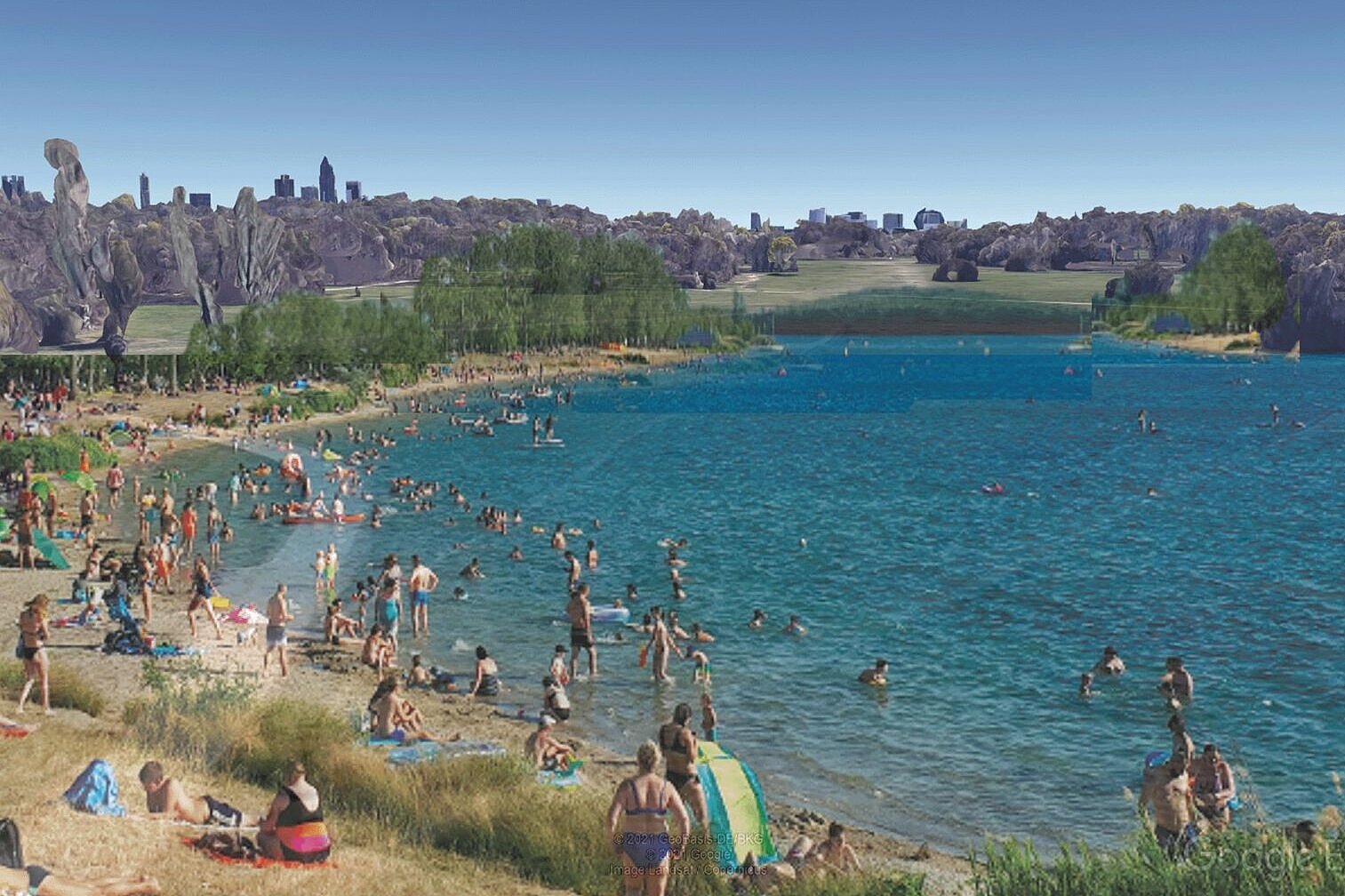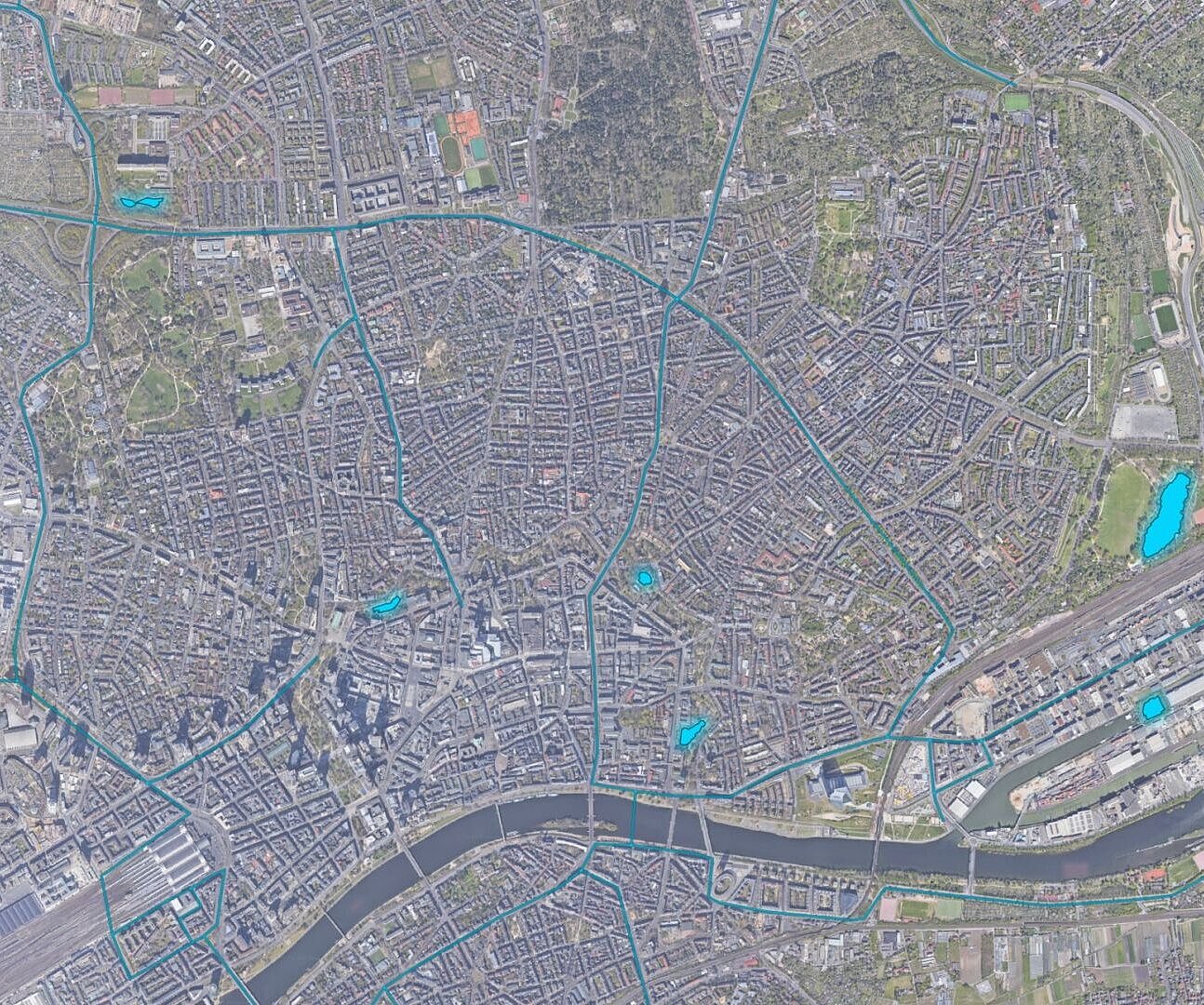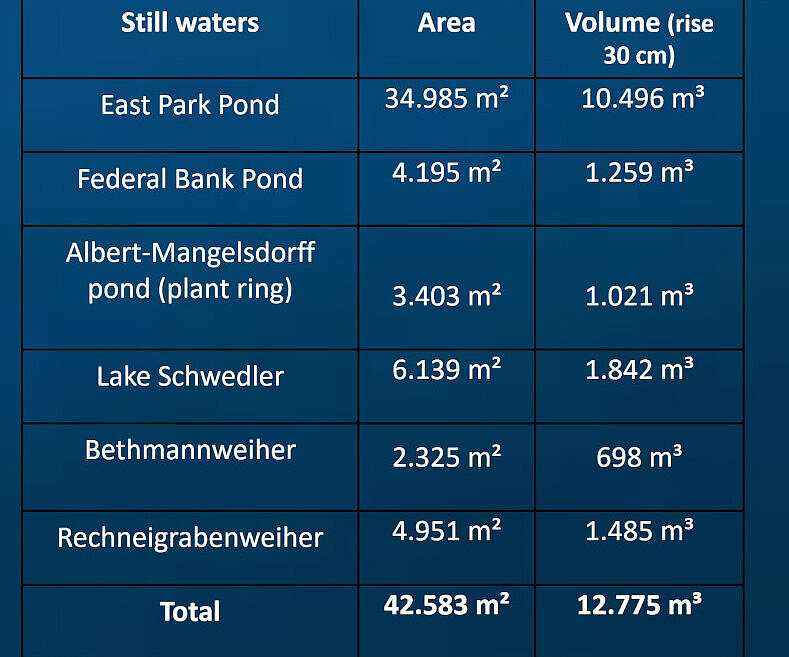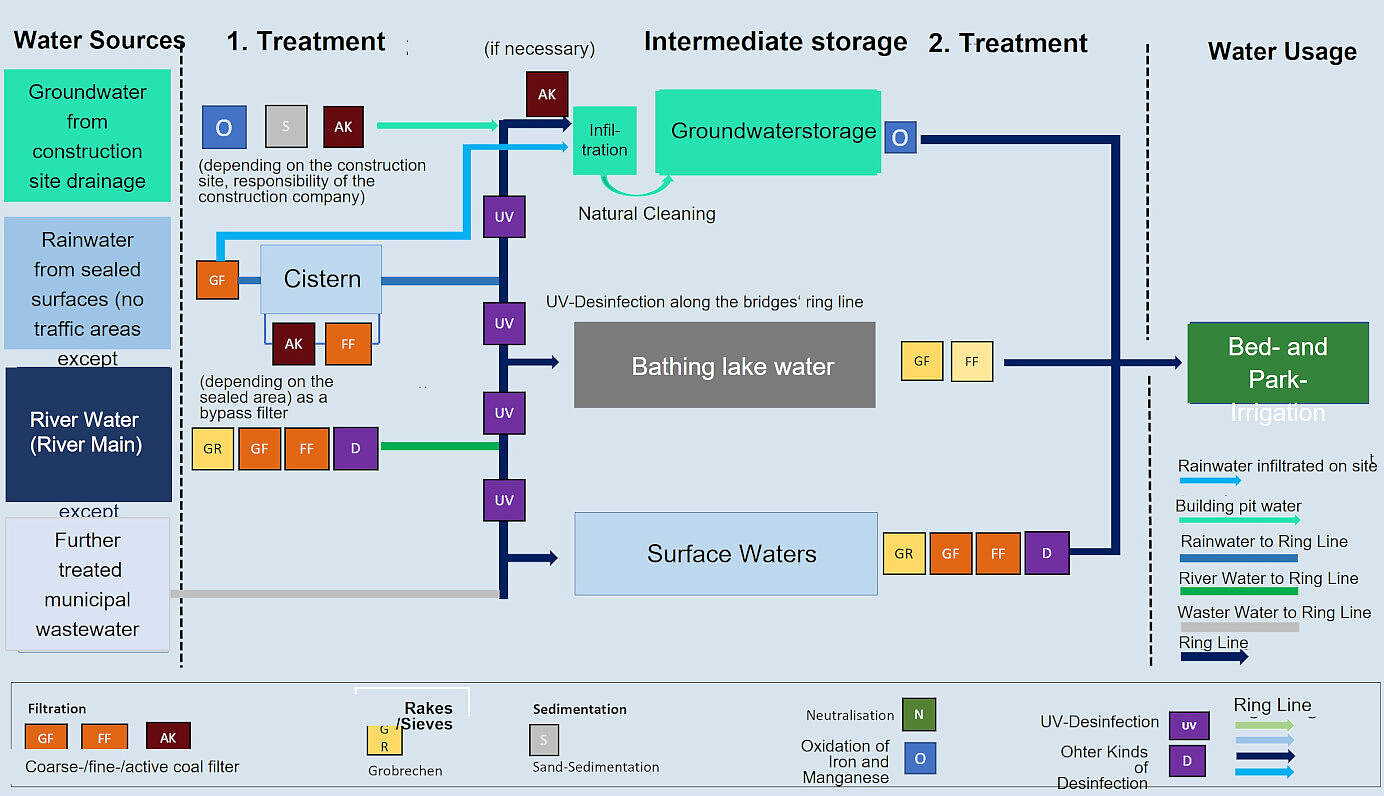Content: The following packages of measures are described for Frankfurt on its way to becoming a water-sensitive city
Surface waters in the city represent reserve and intermediate storage for the watering of plants. Like rainwater and groundwater from construction sites, water from the Main River or from stillwaters must be treated before it is fed into the ring main and before it seeps into the groundwater reservoirs.
Another important untapped source of water is wastewater: Similar to most other major cities in the world, the greatest reserve potential for the city of Frankfurt lies in the reuse of wastewater. The need for this could arise in the context of climate change.
In Frankfurt, there are also numerous additional smaller measures to irrigate urban greenery and thus improve the urban climate, such as the creation of swales or the installation of cisterns or infiltration trenches - all milestones on the way to becoming a water-sensitive city.












